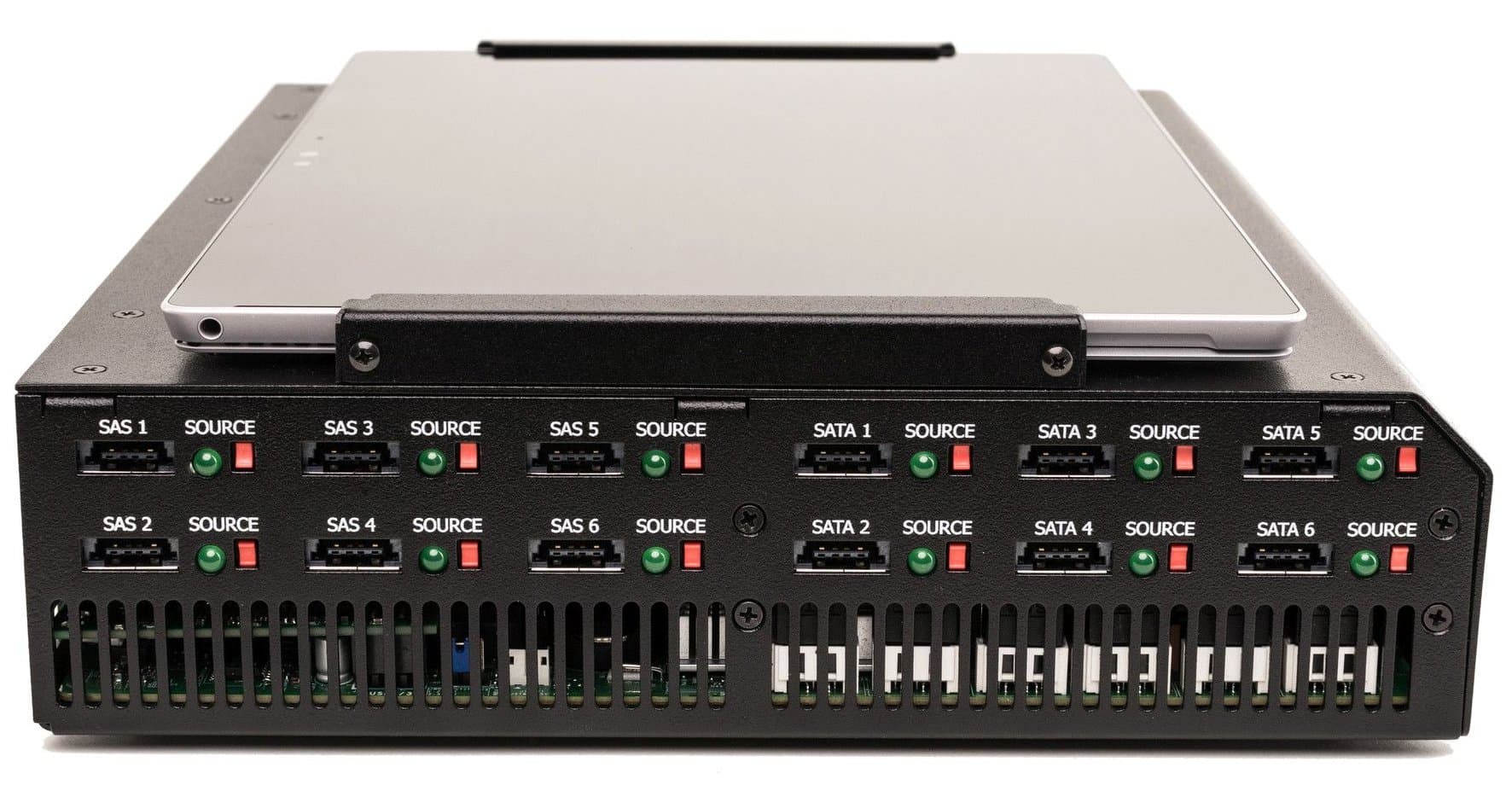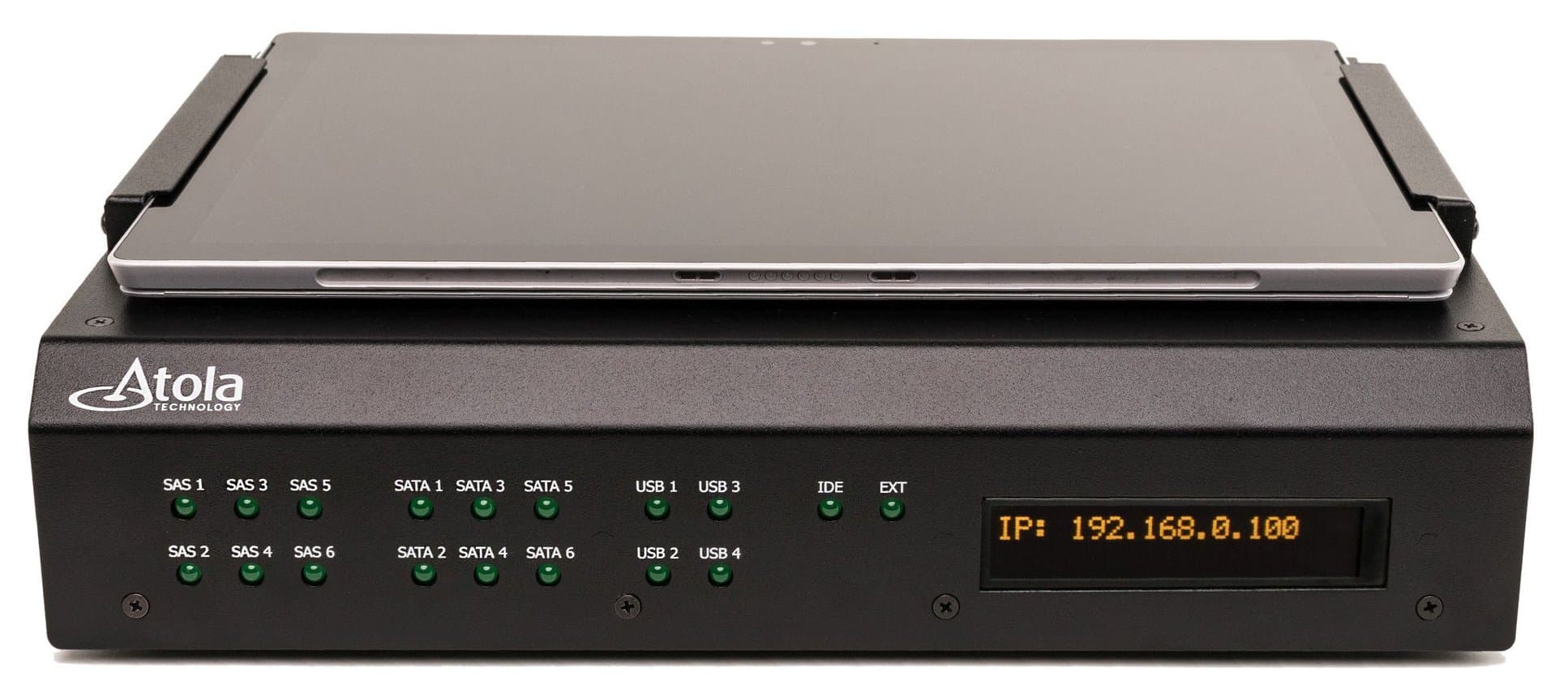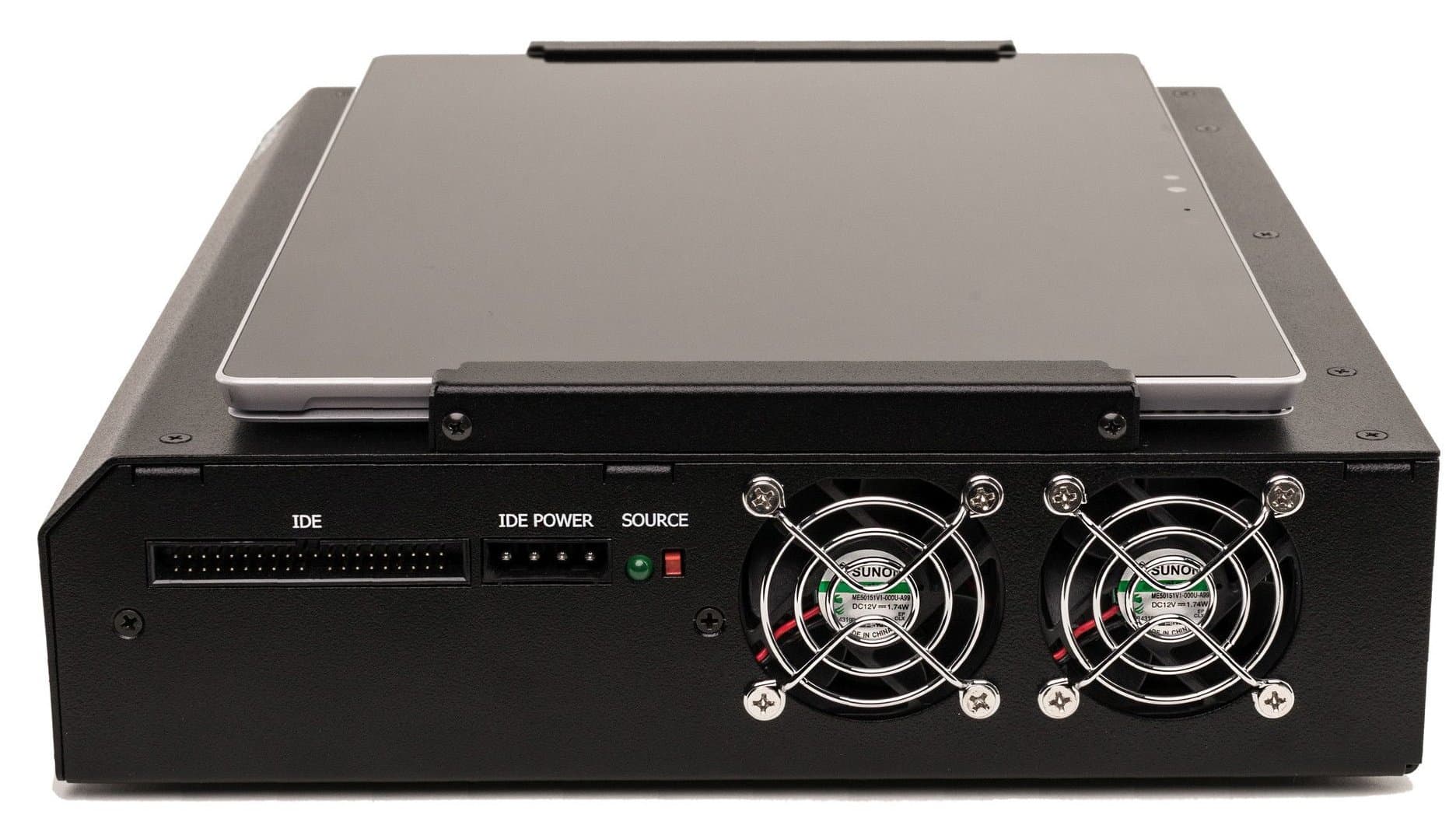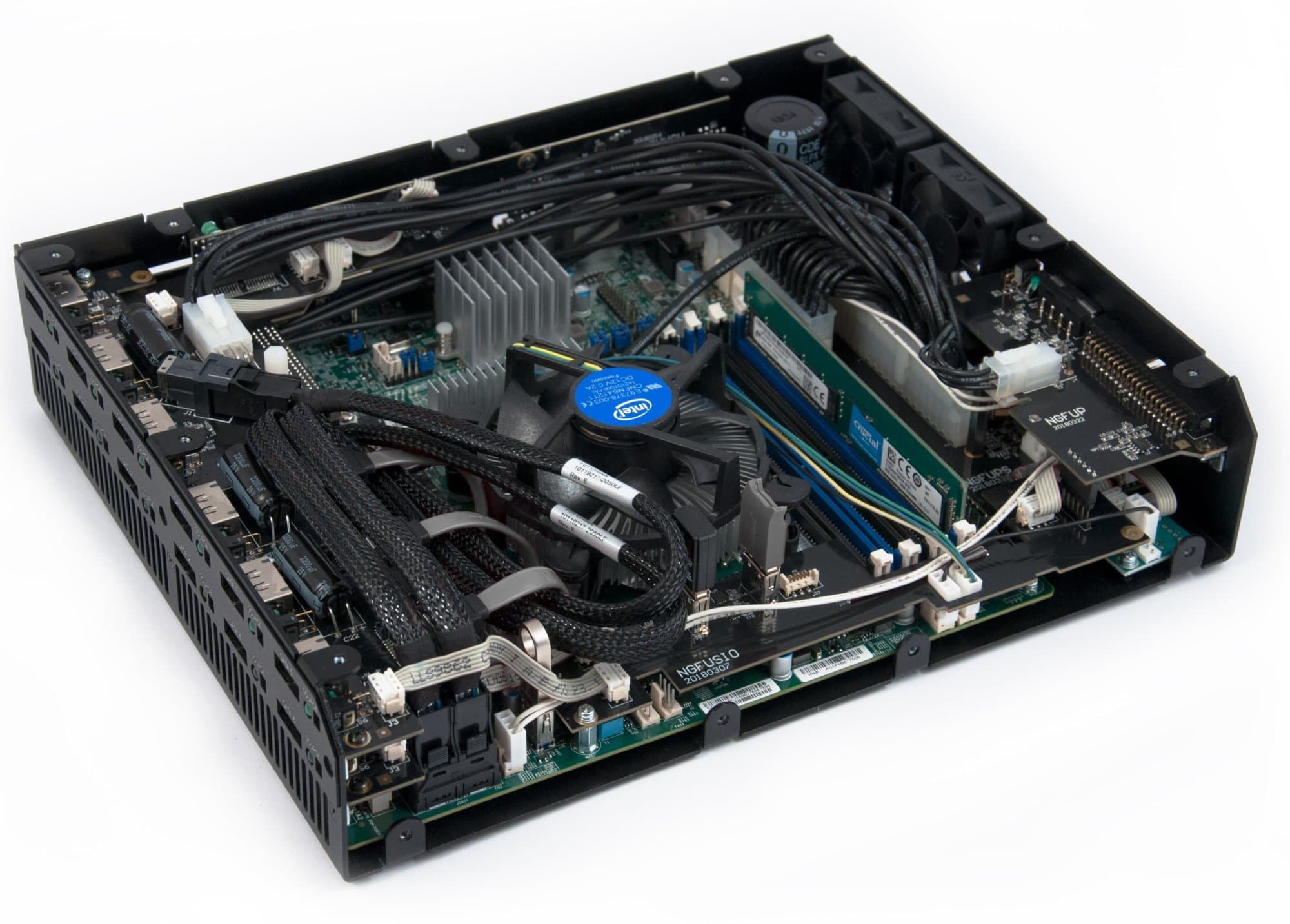Forensic Hardware
To support multiple simultaneous imaging sessions and other forensic tasks running on its 18 ports at top speeds, TaskForce hardware unit is built on extremely robust, high-capacity components that include a server-grade motherboard, 8-thread Xeon CPU 3.7 GHz and ECC RAM. To ensure high quality and efficiency of our tools, we test them on hundreds of storage devices.
This forensic hardware unit is designed for various types of digital investigations. It can be used in the lab and in standalone mode.
The hardware is covered by a Lifetime warranty for as long as you keep your subscription active.
Ports, indicators & switches
Ports:
- 6 SATA
- 6 SATA/SAS
- 4 USB
- IDE
- Extension slot (for Thunderbolt, Apple PCIe SSD and M.2 SSD extension modules)
Source/target switch on each of 18 ports enabling hardware write protection in source mode:
- Source mode: helps safely connect and with the examined evidence drives to TaskForce
- Flexible port configuration: any TaskForce port can serve you as source or target depending on your needs.
LED indicators: two indicators for each of 18 ports. One indicator is located next to the port’s source/target switch and lights up when source mode is enabled.
Two 10Gb Ethernet ports
- In the lab: handles 12+ multiple imaging sessions utilizing two 10Gb network connections
- In the field: works fast with modern portable NAS solutions
Other ports: Serial RS232, IDE power, VGA, RS-232, DC IN 24V
Supported hard drive interfaces: SATA I/II/III, SAS3 (12Gb), USB 2.0/3.0, IDE
Power switch
Flash card support via card reader attached to any USB port of TaskForce.
Displays
Main display: Microsoft Surface Pro 7/6/4
- Screen: 12.3" PixelSense Display
- Resolution: 2736 x 1824 (267 PPI)
- Touch: 10 point multi-touch
- Detachable from TaskForce if necessary
IP display: OLED (20x2 characters)
Physical / Environmental
- Aluminum case
- Dimensions (including screen): 12.2 x 11.6 x 3.15 inches (31 x 29.5 x 8 cm)
- Weight (including screen): 4.5 lbs (3.6 kg)
- TaskForce working temperature range: 0°C – 40°C (32°F – 104°F)
- Screen working temperature range: 0° – 35°C (32° – 95°F)
- Power consumption: 60 Watt average, 280 Watt peak
- Supply Voltage: 100 - 240 VAC, 50 - 60 Hz
- RoHS compliant
Other specs
- Internal OS: Linux running a custom kernel
- Control interface: web-based TaskForce application
- Removable NVMe SSD for internal case management database
- Optional WiFi 802.11n 150 Mb/s adapter in access point mode for easy connectivity (purchased separately)
Inside the forensic hardware unit
TaskForce forensic hardware unit is essentially a small server-grade computer running Linux. But because neither BIOS, nor Linux kernel was designed to handle hard disk failures, Atola engineers have invested a significant amount of research and development efforts to build a highly customized and fine-tuned Linux kernel that fully overcomes these issues and handle damaged media properly. Additionally, this kernel features:
- High-speed DMA data transfers, 500+ MB/s
- Full low-level control over SATA, USB and IDE ports
- Full native SATA support
- Reset and SATA PHY control for best handling of severely damaged hard drives
- All BIOS and standard kernel functions are disabled
TaskForce hardware also features Atola's proprietary circuitry for ultimate drive's power control:
- Current sensor for in-depth hard disk diagnosis
- Automatic overcurrent and short-circuit protection
- Overvoltage protection
These features are a must for proper handling of damaged drives.
For instance, low-level control of the SATA, SAS, USB and IDE ports allows TaskForce to handle the devices that do not properly initialize, have many bad sectors, or frequently freeze due to internal (mechanical) failures. SATA PHY control allows resetting a frozen hard drive without a power cycle, thus saving time during imaging, and reducing the chances of further hard disk degradation and failure. Current sensing allows TaskForce to diagnose a failed drive even if it has electronic or mechanical damage.
Overcurrent protection detects when the drive draws abnormal current and stops it to prevent any further damage. Overvoltage protection circuit ensures that in the unlikely event of the forensic hardware malfunction, the attached drives are not damaged in any way.
TaskForce forensic hardware unit is fully controlled by the software via Chrome browser, therefore no Linux experience is required to operate it.
Magnetic screen cover
The cover protects the TaskForce screen from physical damage during transportation and allows for quick and easy packing of the unit.
Made of 2-mm thick alumium, it is sturdy to protect the screen from scratching and breaking, yet is lightweight and thin to add no additional bulk to the device.
5 magnetic screws on TaskForce's upper panel help attach the lid quickly and easily. It is as easily removed with a measured pulling motion.
The cover comes in the standard package with TaskForces assembled from September 2020 onwards. All customers with an active TaskForce subscription can receive the complimentary cover by contacting our support and providing their unit's serial number and shipping address.
NB The only magnetic parts used are the magnetic screws. While our tests have shown that they are not able to damage a drive, we recommend that no storage or other devices are placed near the magnets.







